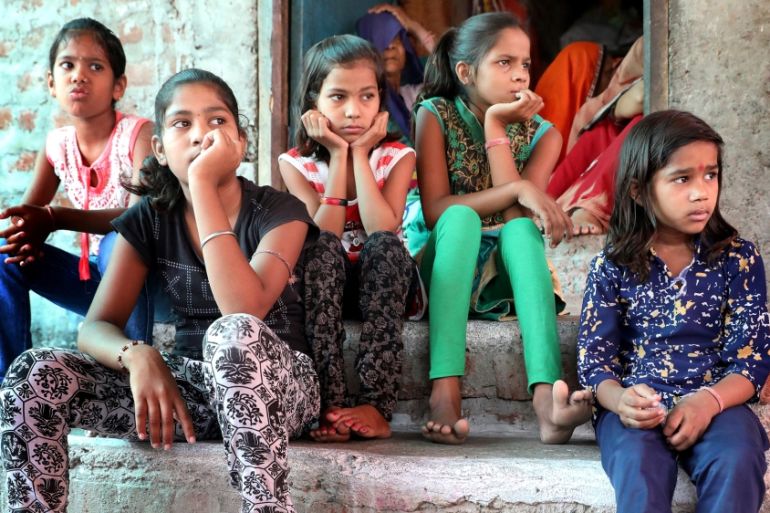
The Politics of Population Control
How Western family planners helped curb the birth of girls in developing countries, the effects of which are felt today.
Editor’s note: This film is no longer available to view online.
In a busy market, Chinese parents Pang Zhengdong and Hu Aizhen are handing out flyers in search of their missing three-year-old daughter, Pang Xiuting, who disappeared without a trace.
Keep reading
list of 4 itemsPhotos: Bangladesh opens mosque for transgender hijra community
‘No women allowed’: The powerful membership of UK’s men-only Garrick Club
Goals not guns: How a girls football team in India’s Manipur beats violence
At first, nobody believed that something terrible could have occurred in their peaceful village in Guangxi province in southern China, where everyone knows each other. But the search for her has remained fruitless and all that’s left for the parents are their memories and baby photos of happier times.
“Kidnappings of little girls are not uncommon in China,” says Du Yin, who works for a relief organisation and knows a lot of despairing parents. Across China, there are already 200,000 volunteers searching for missing girls like Pang Xiuting.
“A son’s marriage is expensive … So parents have little girls kidnapped. They then raise a girl together with their son. And when they’ve reached adulthood, they are married to one another,” says Yin.
Even though women make up the majority of the world’s population, almost 200 million girls and women are missing globally today. In some provinces in China, 135 boys are born for every 100 girls.
A preference for sons in India and China’s one-child policy have produced a man-made demographic bubble of excess males in the two countries and may have long-term impacts on crime, human trafficking and the inability of these men to find brides.
When you get instability and violence and insecurity in the two most populous nations on Earth, I don't see how that can't spill over into global international relations.
It is argued that technologies that enable prenatal sex selection, which have been commercially available since the 1970s, are a large impetus for the lack of female children. This way, girls were aborted en masse and birthrates were reduced twofold: fewer babies were being born and fewer girls that could later bear children.
The lack of women of marriageable age in a society poses a serious threat to global stability, explains American political scientist Valerie Hudson, at the Bush School of Government in Texas.
“You’re creating a pool of already socially disadvantaged young men who are already predisposed to challenge the established order. Now you’ve deepened their grievance. There is no hope for them to finally become adult men within their society without taking more drastic action.”
The higher the surplus of men, the higher the crime rate and the number of violent crimes against women.
“When you get instability and violence and insecurity in the two most populous nations on Earth, I don’t see how that can’t spill over into global international relations,” says Hudson.
While international pressure has compelled India and China to ban the use of ultrasounds for the purpose of sex-selective abortions, boys are more prized in these regions because they are looked upon as having an economically productive future, while women are not. As parents grow older they expect much more help and support from their independent sons than from daughters who they believe become, for all intents and purposes, the property of their husbands’ families after marriage.
Fearing a ‘population explosion’
This gendercide is a result of politically motivated population control policies imposed more than 30 years ago by well-known scientists and extremely wealthy men like John D Rockefeller III who had access to the highest levels of the US government.
Their organisations, such as the Ford Foundation, the Rockefeller Foundation, and the Population Council, which still exist today, triggered worldwide fears of a population explosion, according to Matthew Connelly, a historian at Columbia University in New York. He has researched in detail the development of this movement from its beginnings to its effects today.
“The Population Council saw its mandate not just to control the rate of population growth, but also to address problems in the quality of population. So they had an explicit mandate to try to do something about the growth of the fertility rates among people who they thought would eventually take over the world if something wasn’t done to reduce fertility rates across the board. But especially among people who they thought would be poor parents that would have even more poor children.”
The fear of poor people having children gained steam in American politics by 1966, where US president Lyndon B Johnson attached conditions to receiving development aid, one of them being that recipient countries must reduce their population.
This eventually led to the creation of the United Nations Population Fund, which actively channelled millions into population control campaigns in South Korea, China, and India – including forced sterilisations and the mandatory use of contraceptives by poorer segments of society.
Ironically, all of this took place at a time when American and other western women were fighting for access to birth control and dying from unsafe abortions.